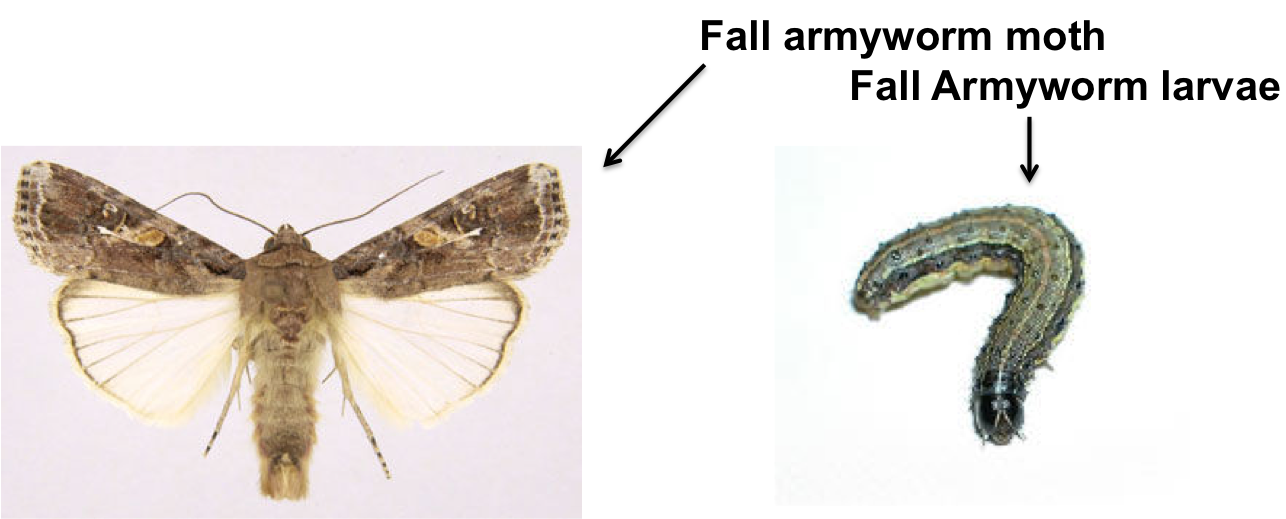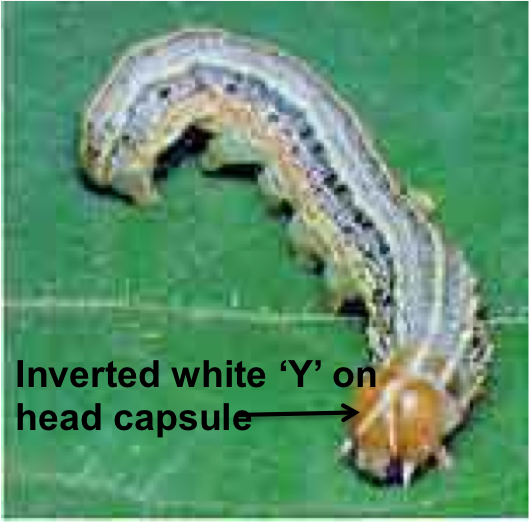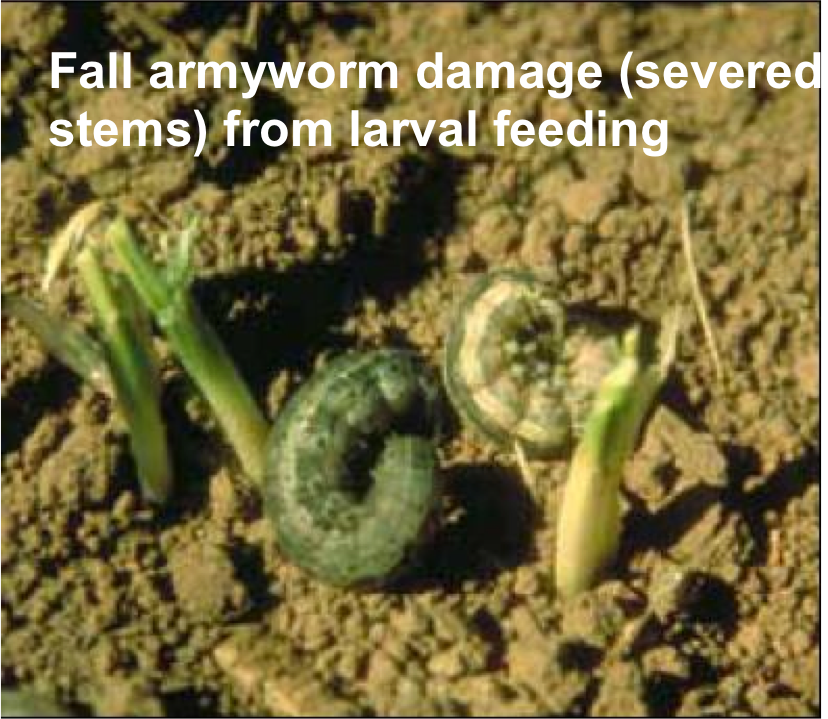Fall armyworm caterpillar
This moth does not overwinter in Kansas but migrates northward annually from southern states. It usually arrives in Kansas in July where it lays eggs on corn, sorghum and other summer crops. Reproduction may continue through August and into September, putting earlyplanted wheat at greatest risk. Early-planted fields should be inspected frequently during the first few weeks following emergence. The first sign of damage is “windowpane” injury caused by tiny larvae chewing on seedling leaves. The larvae, which are usually too small to be easily observed at this time, hide in or around the base of seedlings. Within a few days the larvae are large enough to destroy entire leaves. Fields with 25 to 30 percent of plants with windowpane injury should be re-examined daily and treated immediately if stand establishment appears threatened. Larvae increase in size at an exponential rate, and so do their food requirements. Later instars do the most damage, sometimes destroying entire stands, and are the least susceptible to insecticides. Without treatment, problems can continue until larvae reach maturity or until there is a killing frost.



